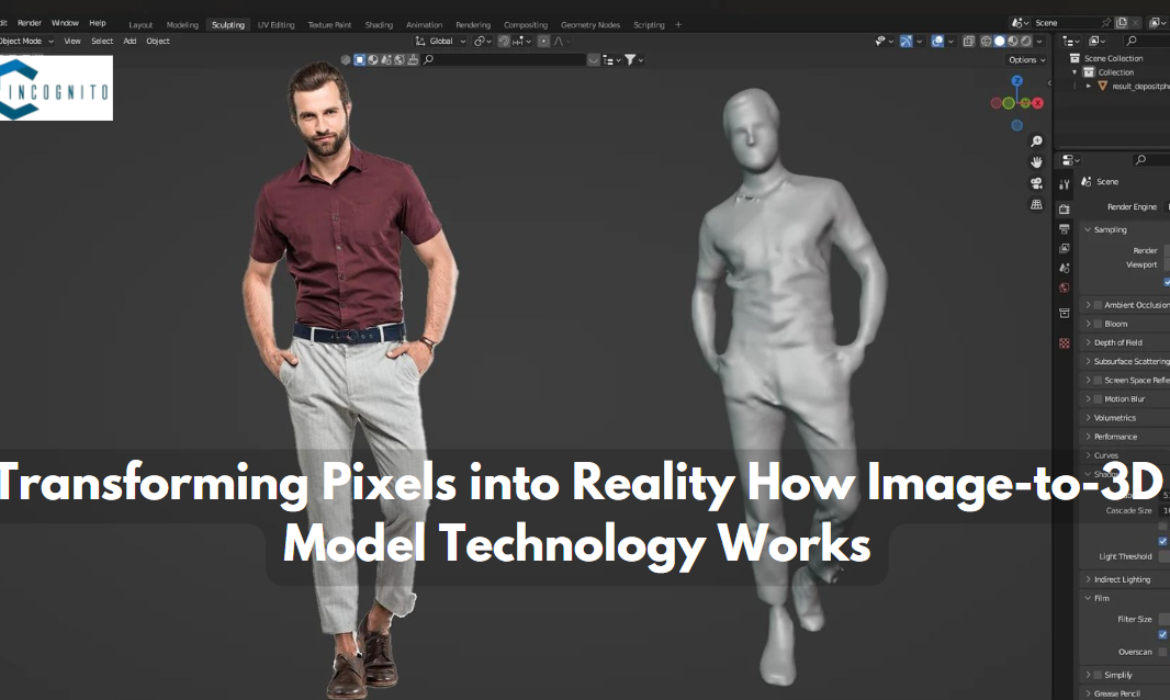
Digital photography and 3D modeling are two active sectors that have inspired many enthusiasts and technology-savvy people. What happens however if these two different worlds intersect?Enter image-to-3D model technology, a groundbreaking innovation that’s revolutionizing how image to 3D model technology works.
Imagine snapping a photo of your favorite coffee mug and changing that picture into a 3D show you’ll be able to control, animate, or even 3D print. It sounds like enchantment, but it’s not a cutting-edge innovation that’s now making waves in different businesses.
Whether you are a photographer looking to grow your creative skylines or a 3D devotee energetic to open modern capabilities, understanding how image-to-3D model technology works is crucial. This web journal post points to demystify the method and appear to you just how magical this technology can be.
The Basics of Image-to-3D Model Technology
At its core, image to 3D model technology involves converting 2D images into three-dimensional models. This process leverages modern algorithms and software tools to translate the depth, shape, and surface of the objects in your photos.
Turning flat, two-dimensional pictures into three-dimensional models is an interesting handle that has changed areas like gaming, virtual reality, design, and archaeology.Understanding the basics of image-to-3D model technology reveals the sophisticated yet intuitive.
3D Images Processing
Image-to-3D technology uses advanced algorithms, such as photogrammetry or depth mapping, to transform flat, two-dimensional pictures into immersive three-dimensional models. The software begins by analyzing the image, identifying features, textures, and pixel variations that indicate depth and spatial relationships within the scene.
By interpreting these visual cues, the software calculates disparities and variations in the image to derive depth information. This process creates a depth map or point cloud, effectively converting the 2D image into a 3D spatial representation.
This depth data forms the foundation for building a detailed and accurate 3D model. This technology finds applications in various fields, including virtual reality, gaming, design, and archaeology, revolutionizing our interaction with digital visual content.
How Does Image-to-3D Model Technology Works
- Image Analysis: The software examines the image to identify key features, textures, and pixel changes that indicate depth and spatial relationships.
- Depth Calculation: By interpreting these visual clues, the software calculates depth information. This creates a depth map or point cloud, turning the 2D image into a 3D representation.
- 3D Model Construction: Using the depth data, the software builds a detailed and accurate 3D model.
This technology is used in many areas, including virtual reality, gaming, design, and archaeology, changing how we interact with digital visual content.
Practical Applications
From entertainment to designing, image-to-3D model technology features a wide range of applications.
- In Photography:Photographers can now offer clients 3D representations of products, buildings, and even individuals. This includes a new measurement (play on words expecting) to portfolios and client deliverables.
- In Gaming and Animation:Game developers and artists use this technology to make life-like characters and situations, improving the immersive experience for players and viewers.
- In Manufacturing:Engineers and creators use 3D models to imagine items some time recently when they are built, allowing for more productive and accurate prototyping.
Why Multiple Images Matter
Except for other constraints such as the depth of the object and other issues, the exactness of your 3D model depends on the number and quality of input pictures. Obtaining more pictures in this case enables the computer program to deduce geometrical features of the object in question more accurately and teach it to create a better 3D model.
The Role of AI
Artificial Intelligence (AI) plays a crucial part in image-to-3D model innovation. Machine learning calculations can analyze and translate information more productively than conventional strategies.
AI in Activity
Feature Acknowledgment: AI algorithms can quickly identify and categorize highlights in images.
Depth Estimation: AI progresses the precision of profundity maps, driving to better 3D models.
The future of AI in 3D Modeling
With advancements in AI, ready to expect even more modern and accurate 3D modeling capabilities within the future. Imagine making a 3D show with just a single photograph. AI is making this a reality.
Challenges
While the technology is impressive, it’s not without its challenges.
Common Issues
- Quality of Input Images: Poor-quality images can result in inaccurate models.
- Complexity of Objects:Highly detailed or intricate objects can be challenging to model accurately.
Overcoming Challenges
Investing in high-quality cameras and taking different pictures from different angles can help moderate a few of these issues. Also, utilizing a progress program with strong calculations can improve show exactness.
Additional information for Success
To get the most out of image-to-3D model technology, follow these best practices:
- Use High-Quality Pictures: Ensure your pictures are clear and well-lit.
- Take Different Angles: Capture your object from as many points as possible.
- Select the Correct Software: Select a device that meets your particular needs and skill level.
Conclusion
Image-to-3D model technology could be a remarkable innovation that bridges the gap between flat pictures and three-dimensional reality. By analyzing pictures, calculating depth, and building detailed models, this technology enables us to interact with digital content in ways that were once thought impossible. As this technology proceeds to progress, its applications will develop, assist transforming how we connect with and understand digital visual content.
Ready to require your capacities to the next level? Explore the tools said, lock in with the community, and start changing your pictures into shocking 3D models nowadays. The future of digital creation is here, don’t miss out!



